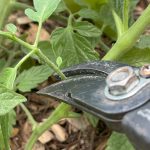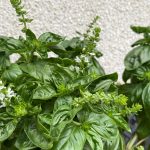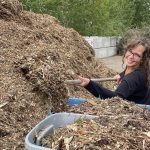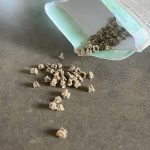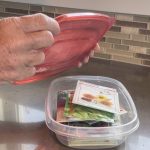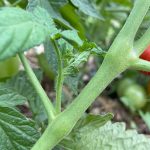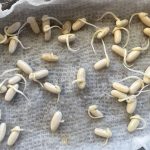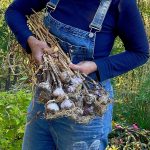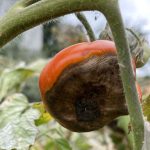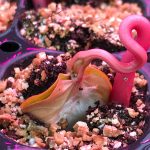Everything You Need to Know About How to Prune Raspberries
Pruning raspberry plants is important for any gardener looking to maximize their harvest. If you’re undersure where to start when it comes to pruning raspberries, this blog is a great place to start.
Understanding the different types of canes, known as primocanes and floricanes, is fundamental to knowing when and how to prune effectively.
In this blog post, we will delve into the world of raspberry pruning, look at the benefits of pruning raspberries, explore how to distinguish between raspberry primocanes and floricanes, and provide practical tips on when and how to prune these delicious raspberry fruit-bearing plants.
Raspberry Primocanes and Floricanes Explained

Raspberries are fascinating plants.
Raspberries are a member of the rose family — that’s where the prickles come from — and they are native to North America. It always makes me happy to talk about plants native to where I live!
Raspberry plants have perennial roots and crowns that grow biennial raspberry branches, called canes.
Raspberry roots, being perennial, grow for more than three years, and raspberry plants have a lifespan of at least 10-15 years.
The biennial canes, however, only live for two years.
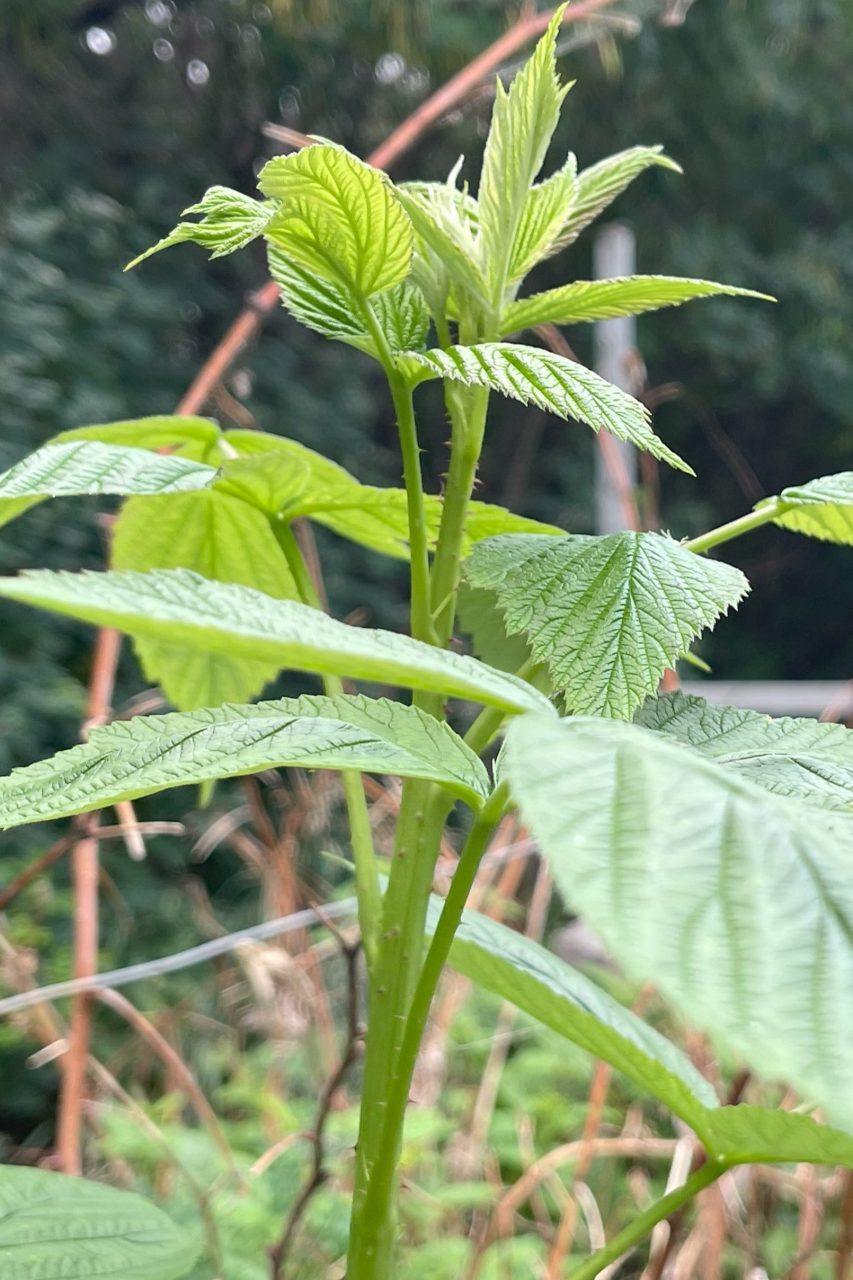
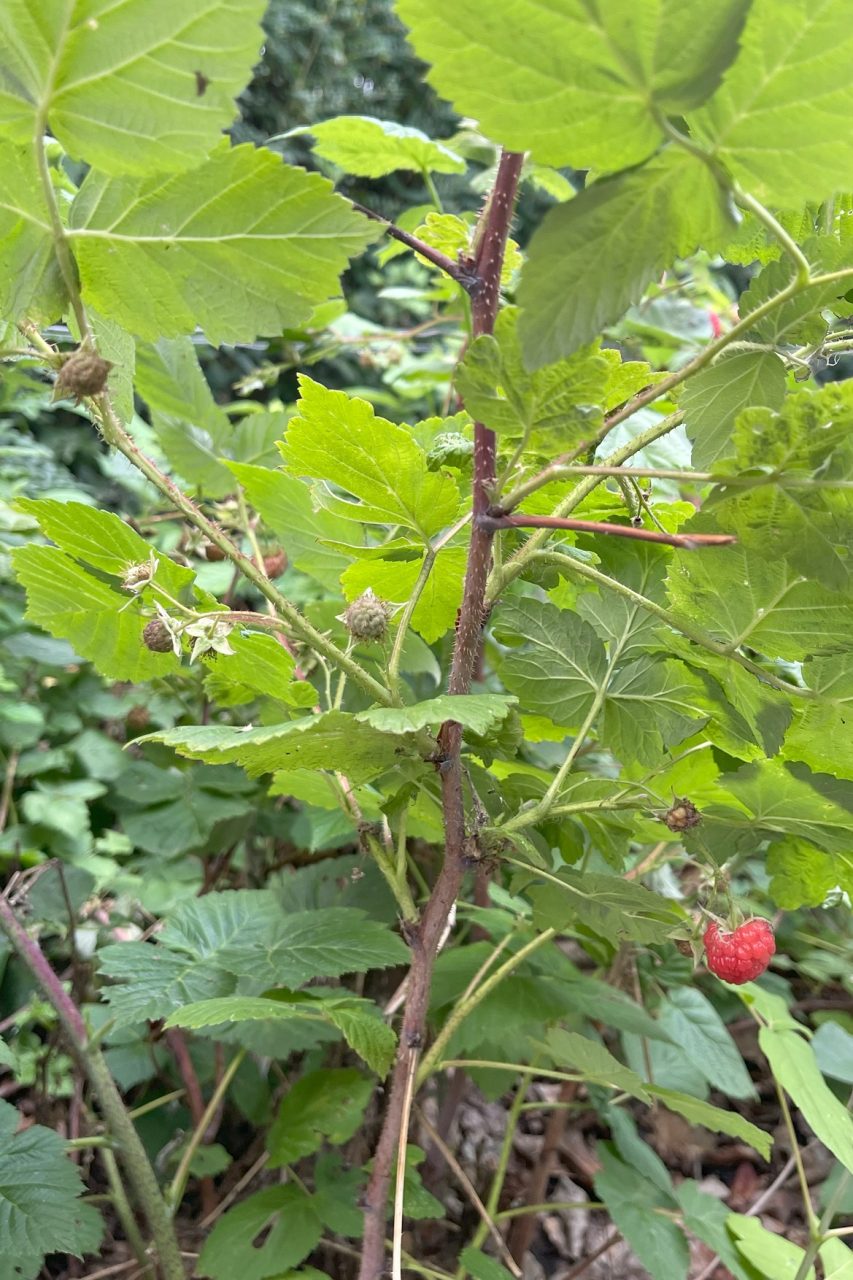
A first year raspberry cane called a primocane. It produces green, leafy growth on fleshy, green stems during the first season.
The primocane foliage dies back in the fall, and the cane goes dormant for winter.
In the second season, the raspberry cane now called a floricane, emerges from dormancy in spring growing new foliage, but this time it produces flowers pollinated by bees, and fruit develops.
Floricanes produce additional branches, called lateral branches, which emerge between the leaves and stems, increasing their productivity.
After completing fruit production, the floricane’ s lifecycle is complete, and as it ages, the stem becomes woody and brittle and dies.
While the floricanes produce fruit, the raspberry roots also grow first-year primocanes. These two cycles develop simultaneously to produce fruit continually year after year.
The Benefits of Pruning Raspberries
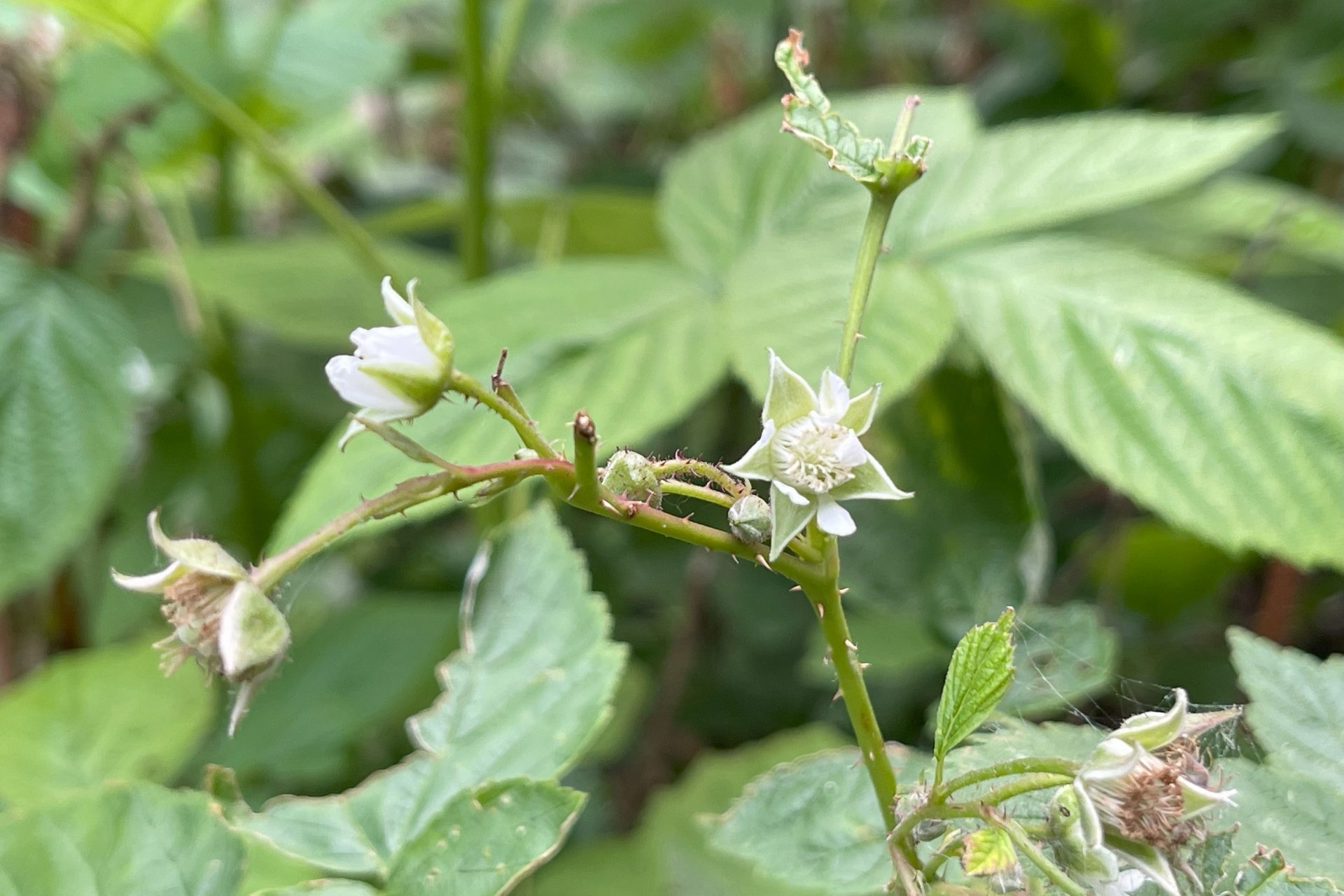
There are several benefits to pruning raspberries, other than boosting raspberry fruit yield, so let’s explore those here:
- Pruning raspberries improves plant health by removing dead, diseased, or damaged canes and reduces the risk of pests and diseases by promoting better air circulation and sunlight penetration.
- Pruning helps increase fruit production by promoting and stimulating the growth of new canes.
- Proper raspberry pruning techniques, which remove excess and spindly canes, allow the plant to focus its energy on the remaining canes resulting in larger and juicier fruits.
- Regular pruning also helps to maintain the overall shape and structure of raspberry plants, making them easier to manage and harvest.
Let’s look more closely at pruning methods for raspberries.

Want the inside scoop on more gardening tips? Get early access to all my blogs and exclusive content by signing up for my newsletter!
Pruning Principles for all Raspberry Types

Raspberries should be pruned when the canes are dormant, which is in late fall and during late winter before they start growing.
Specifics about managing primocanes depend on what type of raspberry they are, which is described lower in this blog under summer-bearing and fall-bearing raspberries.
Gardeners can choose which season works best for pruning in their raspberry patch; the important thing is that the raspberry plants are pruned.
What Does a Dormant Raspberry Primocane Look Like?

Primocanes begin the growing season with green, fleshy stalks with leaves growing in an alternate pattern up the stems.
As primocanes age during the growing season, they develop a light brown bark and are dormant when their leaves die back.
What Does a Dormant Raspberry Floricane Look Like?

Floricanes don’t go into dormancy. When floricanes have completed their fruit production, their canes die, they become woody and brittle, and their thorns are stiff and prickly.
- Floricanes that are done bearing fruit can be cut down to the ground anytime.
- While pruning, you can also do some raspberry cane thinning. Take out damaged canes and those with a diameter of less than a pencil.
- Allow 15 cm (6″) of distance between canes to give them adequate growing space.
- Always use clean tools when pruning raspberries.
Remember, when plants are pruned, their internal structures are open and exposed to the elements which increase the risk of them acquiring an infection.
Wash garden clippers in hot, soapy water; adding a little bleach is optional.
Pruning Floricane-Fruiting or Summer-Bearing Raspberries
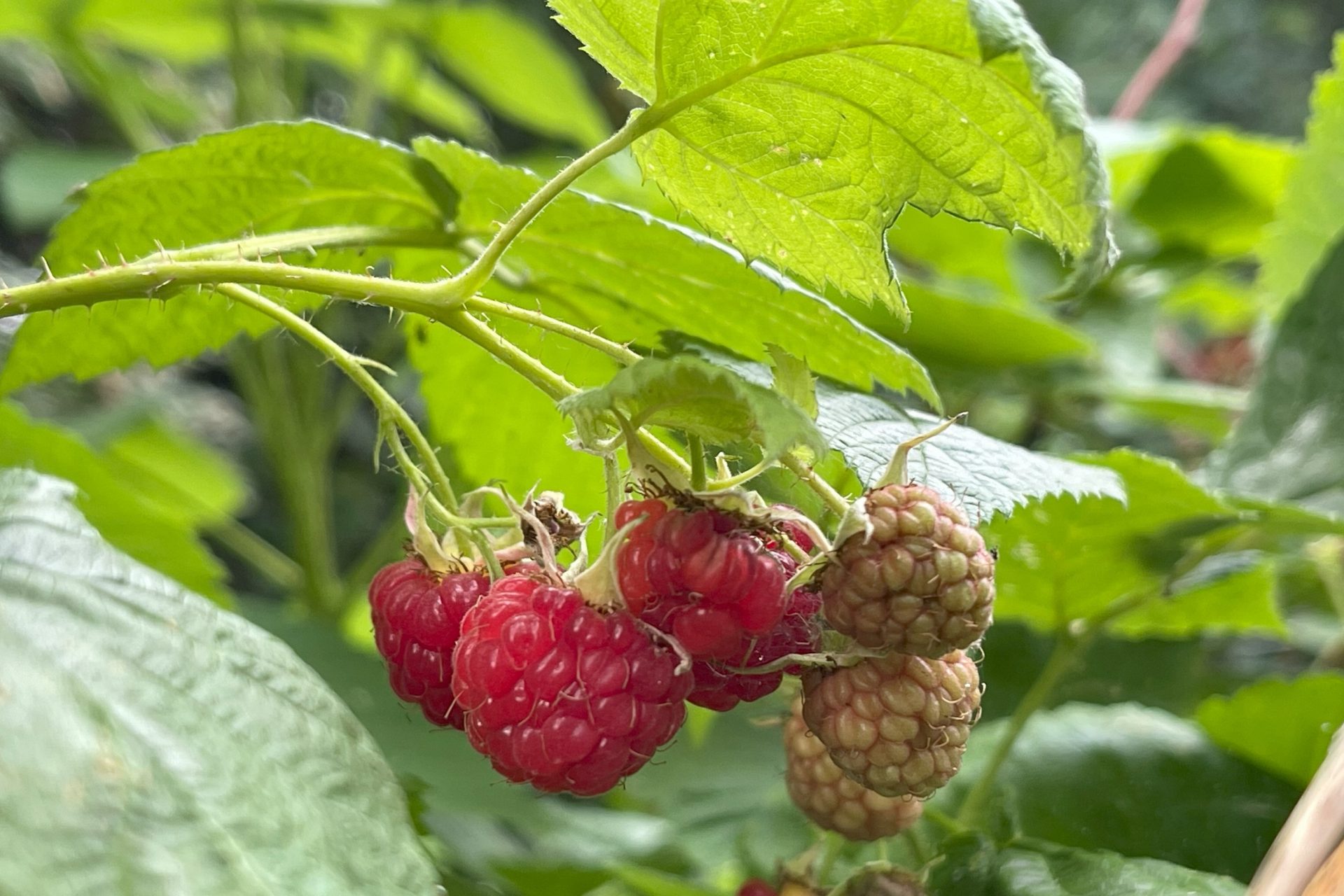
Summer-bearing or floricane-fruiting raspberries follow the traditional pattern of raspberry growth described above where a primocane only grows foliage; then go dormant during the winter and re-emerge in spring to grow flowers and produce fruit.
Raspberries that follow this growth pattern are known as summer-fruiting raspberries because they produce most of their berries in summer, typically starting in July, that taper off toward mid-August.
Examples of summer-fruiting raspberries include: Boyne (Zone 3), Encore (Zone 4), and Royalty (Zone 4).
Foricanes and primocanes grow side by side, developing from root buds and buds in the plant’s crown, which is the area where the roots stop, and the stem starts.
Floricanes produce only one fruit crop, and they die once they are done bearing. Their canes are woody and become brittle.
Cut these dead floricanes down to the ground when they are done bearing fruit; there is no need to wait for them to enter dormancy because their lifecycle is complete.
Leave the primocanes to stand dormant through winter and fruit the following season.
Cut primocanes back to 3/4 of their height in late winter and early spring before they begin to grow. This will encourage lateral branching, which will increase fruit production.
Prune out any overcrowded primocanes, giving each cane 15 cm (6″) of space to grow. Remove weak or thin primocanes that are less than the width of a pencil and any dead floricanes that may have been missed in the fall.
When and How to Prune Primocane-Fruiting, Fall-Bearing, or Ever-Bearing Raspberries

Over the years, breeding programs have developed raspberries that produce significant crops on primocanes called primocane-fruiting, fall-bearing, or ever-bearing raspberries.
Fall-bearing raspberries produces their largest flush of berries in late summer.
These varieties are called fall-bearing because they produce fruit in late July and early August on their floricane growth and in mid-August and into September until frost on their primocane growth.
When the floricanes are done fruiting, the primocanes take over fruit production, which gives the illusion that these raspberries are ever-bearing because they continually produce fruit from summer through fall. Thus they are named ever-bearing raspberries, too.
Examples of fall-bearing varieties include: Fall Gold (Zone 4), Heritage (Zone 4), and Autumn Bliss (Zone 4).
Two Options for Pruning Fall-Bearing or Ever-Bearing Raspberries
Fall-bearing raspberries can be pruned two different ways, depending on what you would like from your raspberry patch or how much energy you’d like to spend on pruning.
1. Cut all Fall-Bearing Raspberry Canes Down at Once
This pruning method is the simplest and involves cutting all the canes, primocanes and floricanes, to ground level when they are dormant.
Remember to do hard raspberry pruning during their dormant period, which can be very late in the fall, winter, or early spring before new growth occurs.
New canes, primocanes and floricanes will emerge in spring to produce a late summer crop of raspberries together.
2. Leave the Fall-Bearing Primocanes and Prune out the Floricanes
Alternatively, another way to prune fall-bearing raspberries is to only prune out the floricanes and let the primocanes go dormant for the winter.
This method mimics the pruning method of summer-bearing raspberries exactly, where the primocanes are left to stand through the winter to come up in spring and grow like a regular floricane.
Cut down the old, spent, woody, brittle floricanes when they are done bearing in mid-summer.
Cut primocanes back to 3/4 of their height in late winter or early spring before they begin to grow. This will encourage lateral branching, which will increase fruit production.
Prune out any overcrowded primocanes, giving each came 15 cm (6″) of space to grow.
Remove weak or thin primocanes that are less than the with of a pencil and any dead floricanes that may have been missed in the fall.
Wrapping up Pruning Raspberries
Raspberries are one of the summer’s most delicious fruits. With bright pops of flavour and colour, they’re a perfect addition to your desserts or just as a snack. It is my dream that you feel equipped with the knowledge and confidence to maintain healthy raspberry bushes and maximize your harvest!
©Sharon Wallish Murphy ©Gardening with Sharon










